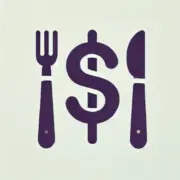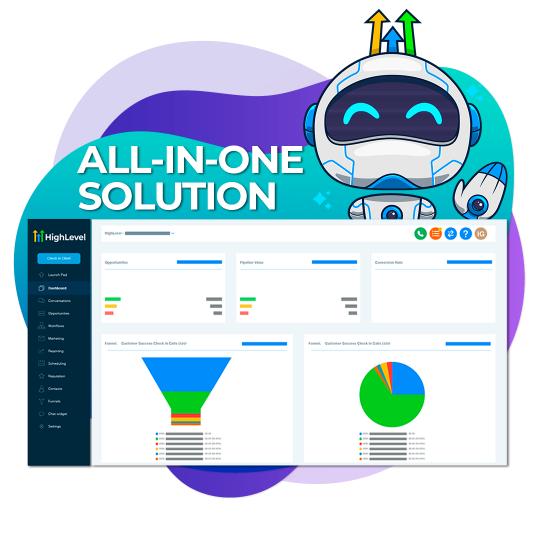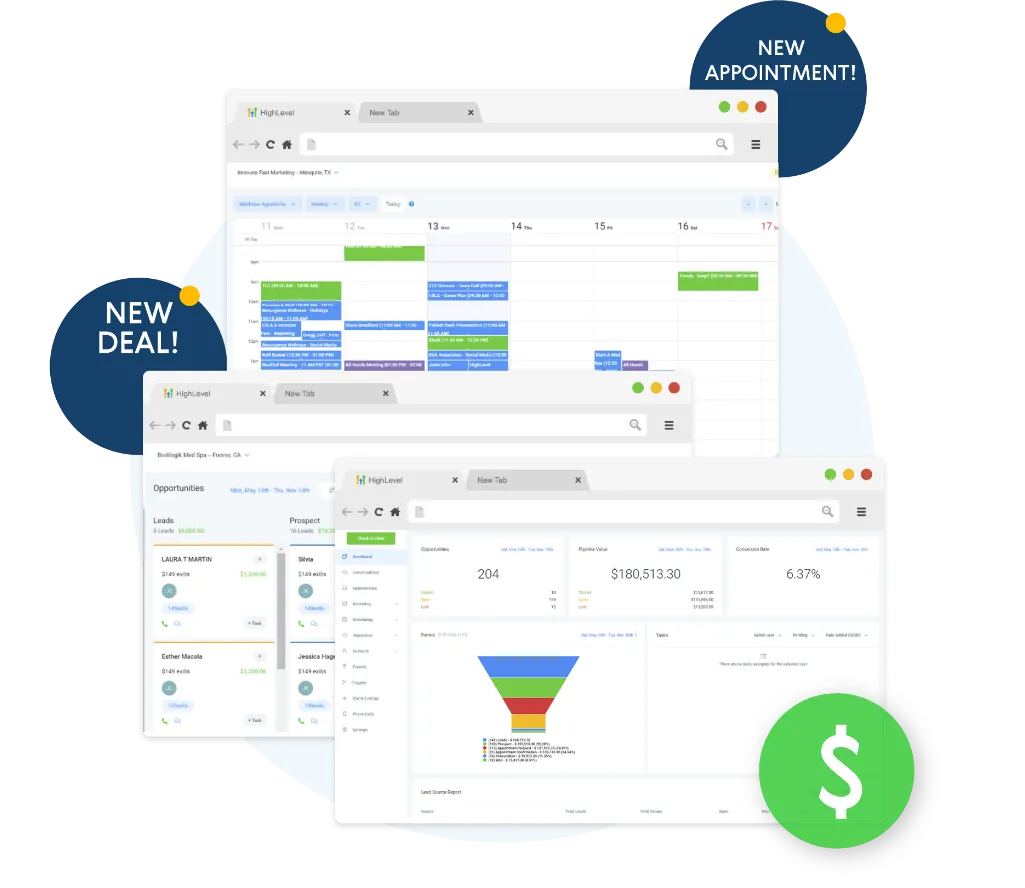Stop Losing Money on Products Nobody Wants
Did you ever make something you thought people would love, but nobody bought it? That hurts. But there's a better way!
You can sell your idea before you make it. This helps you:
- Know if people want it
- Get money to make it
- Make friends with buyers
- Stay safe with your money
Start small. Put up a simple web page. See if people click and care.
Talk to people who might buy from you. Ask them:
- What would they pay?
- What should it look like?
- What features matter most?
When you know what people want, start telling more folks about it. Use websites like Kickstarter to get help with money. Tell buyers what's happening every step of the way. Give special treats to people who buy first.
Remember to:
- Check if people really want it
- Listen to what they say
- Keep in touch with buyers
Track Every Lead, Never Miss a Sale
A good CRM helps you remember everyone who shows interest in your product. It saves time by doing the boring work for you. You'll know exactly who to talk to and when, so you can sell more without working harder.
👉 Try this amazing CRM free for 14 days – Limited time offer!
Key Takeaways
Let's sell our dream before we make it real:
You want to know if people will buy your stuff. Ask them first! Get them excited and ready to buy before you make anything.
Make a simple web page that shows what you want to sell. Let people see it and tell you what they think.
Talk to your first buyers like friends. Tell them how things are going and when they can expect their items.
Use sites like Kickstarter where lots of people can chip in money to help you start.
Write down clear rules about money and returns. This keeps everyone happy and safe.
Understanding Pre-Selling Fundamentals

Pre-selling helps you test if people want your product before you make it.
Think of it like asking friends if they want to buy cookies before you buy all the ingredients. It's a smart way to start a business.
When you pre-sell, good things happen. You get money up front. You know people really want what you're making.
And you learn how much to make. Many smart business owners do this instead of guessing what people might want.
The best part is that your first buyers can tell you what they like and don't like.
This helps you make your product better. You stay safe by not spending too much money, and your buyers get to be the first ones to try your new product.
Building Market Validation
Let's find out if people want to buy what you plan to sell.
Start small and test your idea first. Ask people to buy early, watch how they react to your offer, and listen to what they say.
Make a simple web page to show your product and see who clicks to learn more. Talk to real people who might want to buy from you.
When some folks say "yes" and give you money up front, you know you're on the right track.
This way, you learn what works without spending too much money.
Struggling to hit your sales goals?
Stop losing leads and wasting time on manual tasks. Automate your sales process to close deals faster and grow your business effortlessly.
Discover how to transform your sales today!
Testing Market Interest First
Want to build something people will buy? Smart business owners know to check if customers want it first. This helps them avoid wasting time and money.
Start by knowing what you want to learn. Find out who might buy your product. Then pick the best ways to test your idea.
You can learn what people think in many ways. Talk to them face to face. Send out short questions. You can even make a fake product page to see if people try to buy it. If you have a early version ready, let people try it out.
Look at how many people might buy your product. Check what price they'd pay. This shows if you can make money.
Watch out for wrong guesses about what people want. Make sure you get good answers from real people. Listen to what they say and be ready to change your plans.
Gauging Real Demand Early
We need to know if people really want what we plan to sell.
Let's find out who our customers are first. Think about the people who might buy from us – what do they like and need?
Talk to people and ask them what they think. Send out simple questions.
You can also put up a test website to see if folks click to buy. This helps us know if they truly want our product.
Look at other sellers too. What're they doing? What're they missing?
Use tools like Google to see if more people are looking for what you want to sell.
Keep asking for feedback. Listen to what people say.
Change your plans if you need to.
Proving Concept Through Sales
Getting sales shows your idea works. Think of it as a test run for your product. You need to show people it works before they'll buy it.
You want to do three things:
- Show your product in action
- Ask people what they think about it
- Find the right buyers and talk to them
Start small. Test your product with a few buyers first. Watch how they use it. Learn what they like and don't like. Talk to them often.
Look at what other sellers do. See how your product is better. Tell people why yours is the best choice.
Find buyers at events or on LinkedIn. Talk to them about how your product can help them. Make it easy for them to try it out.
When you get sales, it proves your idea is good. More people will trust you and want to buy from you.
Risk Assessment in Pre-Selling

Let's look at how to stay safe when selling things before they're ready. Think of it like checking if someone can catch a ball before you throw it.
First, make sure your buyer can pay for what they want. Check if they know how to use your product. See if what you sell fits what they need.
Keep notes about what you decide. Write down ways people might use your product wrong. Then plan how to fix those problems if they happen.
When you do this work up front, buyers trust you more. They see you care about doing things right.
You can also offer different ways to pay if money is tight. Make sure you follow all the rules too.
Establishing Customer Trust
When you have a new product coming soon, you need to make friends with your future customers first.
Talk to them like real people. Tell them how things are going. Share both the good news and the problems you face.
Be honest about when things will be ready. This helps people trust you.
When people trust you, they feel better about buying your product before it's out.
Building Long-Term Relationships
We want our customers to trust us, so we need to make real friends with them. This means talking to them often and treating them like people who matter to us.
Here's what works best:
- Listen to what customers tell you. Make sure they know you care about helping them.
- Answer their questions fast. Show them you want them to do well.
- Give special rewards to people who support you early. When you keep customers happy, your business grows.
We need to talk to each customer like a real person. When we do this right, they stick with us for a long time. This helps both them and us do better.
Transparent Communication Strategies
We believe in talking openly with you, our customer. Like friends, we want to show you how we make things and what goes on in our company.
We share our wins and problems on social media and when you talk to our team. We tell you how we make our products, where we get our supplies, and when new items will come out.
We also make sure you know what things cost and why. When you know what we're doing, you trust us more. By being open and honest, we grow closer.
This makes both of us happy and helps us work better together. Think of it like sharing a story with a friend – the more you share, the stronger your friendship gets.
That's how we want to work with you.
Pre-Selling Success Stories
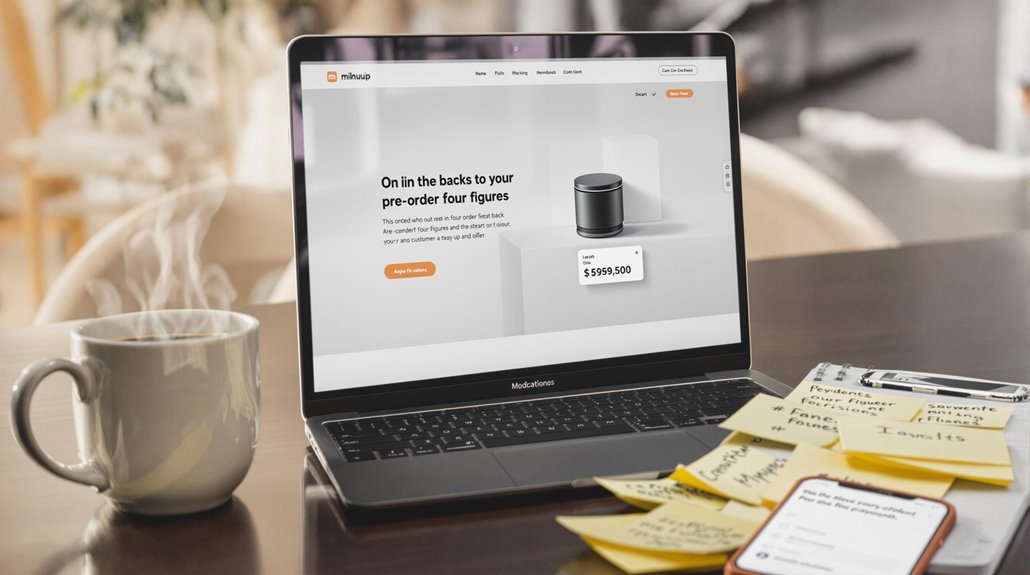
Pre-selling helps companies sell new things before they make them. Look at Tesla – they sold over 325,000 of their Model 3 cars in just one week! That's $14 billion from people who wanted to buy the car before it was even made.
Want to try pre-selling? Here are some ways that work well:
- Make only a few items and give good prices to early buyers
- Talk to your fans on social media and keep them in the loop
- Team up with people who can tell others about your stuff
Big companies like Apple do this all the time with new phones. But small companies can do it too! A small bike company called Flluid got people so excited about their new bikes that fans gave them $1.5 million to make them.
Pre-selling works because people love to be first to get something new. When you tell people about what you're making, they get excited to buy it before anyone else.
Managing Production Timelines
When you're making things people want to buy, you need to know how long it will take. Look at what worked before and plan ahead. This helps you know how much you can make.
Use simple tools to track your work. These tools show you where things might get stuck. Talk often with the people who give you parts. Make sure they know when you need things.
Always plan for things that might go wrong. Tell your customers how the work is going. When you stay open about what's happening, people trust you more.
Good planning helps you get things done when you say you will.
Creating Effective Pre-Order Systems
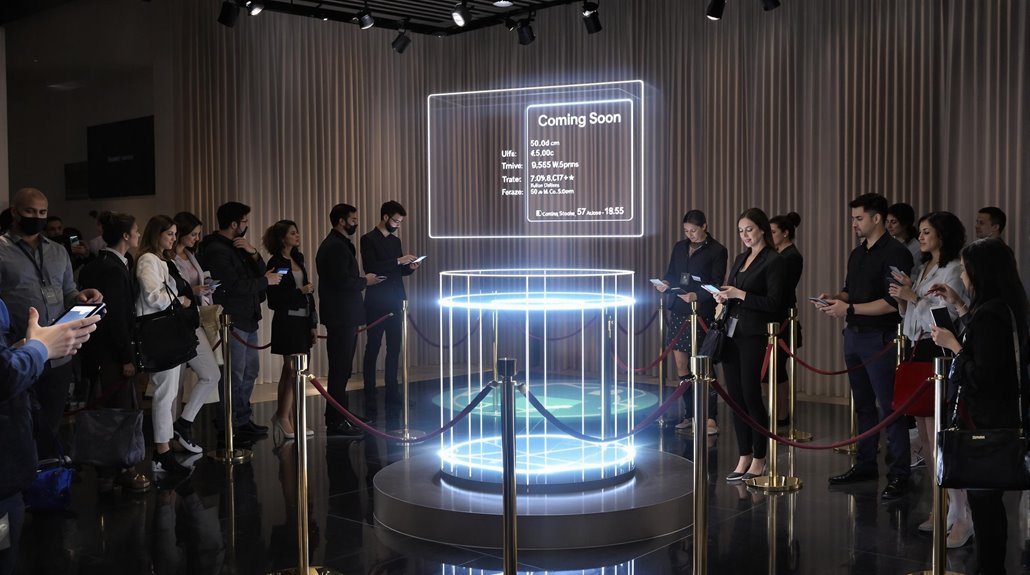
Let's Get Your Pre-Orders Going!
Want to sell your stuff before it's ready? A good pre-order plan helps you do that. You can get sales early and make your fans happy too.
Here's what you need:
- Send fun emails to keep buyers in the loop
- Give special deals to people who buy first
- Show happy customer stories to make new buyers feel safe
Tips to Make it Work:
- Be clear about when things will ship
- Tell people if things get delayed
- Don't sell more than you can make
- Make it fun but keep it real
Smart moves to try:
- Say when offers will end
- Share how many items are left
- Keep count of what you sell
- Make sure you can make what you promise
When you talk to buyers, be friendly and honest. Tell them what's going on with their order. If you take care of people, they'll want to buy from you again.
Market Research Strategies
Let's find out what your customers really want before making your product.
Talk to real people and look at numbers to understand their problems.
See what other companies are doing – check their prices and features.
Ask lots of questions through simple surveys and group talks.
Listen to what people say online.
This way, you'll know if your idea is good based on real feedback, not just guesses.
Identifying Target Market Segments
Finding Your Perfect Customers
When you make something new, you need to know who'll buy it. Think of it like making a new toy – you want to know which kids will love it most!
You need to learn about your buyers:
- Where they live
- How old they are
- What they like
- How they shop
Here's what you can do to find your buyers:
- Talk to people and ask them what they want
- Read what others found out about similar products
- Look at what other companies make and sell
Keep asking people what they think. Listen to what they say they need. Watch how their wants change over time.
The more you know about your buyers, the better you can make things they'll love.
Remember: Your product needs to help real people solve real problems. Watch and learn what makes them happy or sad. Then use what you learn to make something they'll want to buy.
Data Collection Best Practices
We want to learn about what people like and need. It helps to ask them in different ways. First, you can send out simple forms to lots of people. Then, you can talk to a few people face to face.
When you ask people for help, tell them what to do in easy steps. Give them a small thank you gift. Pick people who match who you want to sell to. Ask clear questions and keep their answers safe.
Mix the ways you learn about people. Get numbers from many people. Get deep stories from a few. This helps you know what people want before you start selling.
Competitive Analysis Methods
We like to know what other companies are doing. This helps us find chances to make better products.
To learn about other businesses, we:
Look at how they sell things
Check their prices
See what they give customers
Watch how they talk to people
Ask customers what they think
We also want to find out:
- What others do well
- What they could do better
- Where we can help people more
We talk to real people and ask them what they want. This helps us make things people will love to use.
When we learn all of this, we can make our products better than the rest.
Prototype Development and Testing
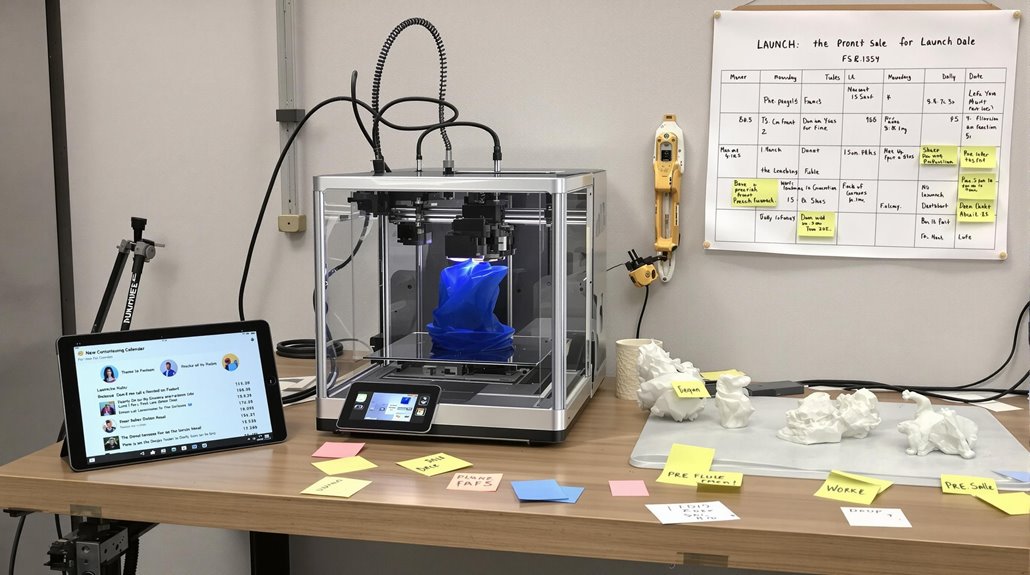
Building and testing new products takes time and care. You start with simple models and make them better as you learn what people want.
Let's look at the steps:
First, draw your ideas on paper. This helps you see if they might work.
Next, make simple digital drawings. This shows how people will use your product.
Then, build something people can click and try. This gives you real feedback.
Last, test two versions to pick the best one for launch.
You need to watch how people use your product. Talk to them and write down what they do. Use tools like Maze to see how they move through your product. Ask many different kinds of people to try it – young, old, and from all walks of life.
Listen to what people say and make the product better each time. Keep track of what works and what doesn't. This helps you make something people will love to use.
| Step | How to Test | What You Learn |
|---|---|---|
| Simple | Paper drawings | Quick ideas |
| Basic | Screen layouts | How people use it |
| Full | Working model | Deep feedback |
| Final | Compare versions | Ready to sell |
Communication With Early Adopters
Let's talk about making friends with people who try new things first.
You need to be honest and share special things with these early friends. Talk to them live on video, in online meetings, and on social media. Tell them what your product can and can't do.
Here's how to make these friends happy:
- Give them first chance to try things and get good deals
- Ask what they think in fun talks and group chats
- Let them know how you're making things better based on what they say
Work with people who others listen to. Say the same thing on all sites where you talk. Show how you can fix their problems with new ideas.
Keep your chats simple and clear. These friends want to help you grow, so treat them like real partners. Share good news and even some hard times with them. This builds trust.
When they give you ideas, show them you're listening. Thank them and tell them how you use their thoughts to make things better. This makes them feel special and want to stick with you.
Pricing for Pre-Sales

We want to help you pick the best price for your pre-sales. This means selling your stuff before it's ready. You can give early deals to people who buy first. This makes them want to buy now, not later.
When you price your stuff, think about who'll buy it. Some people like fancy things and will pay more. Others want good deals.
Be clear about when they'll get their items. Let them pay in ways that work for them.
Good pre-sale prices help you sell more and know what people want. This way, you can make sure you have the right amount of items when you start selling.
Legal Considerations
When you sell products before they exist, you need clear agreements to keep you and your customers safe.
Put everything in simple writing that tells customers what they can expect.
Make sure you follow all the rules about selling things in your area.
Protect your ideas by getting legal papers that stop others from copying them.
This helps you stay ahead of other businesses and keeps you out of trouble.
Contract Terms and Warranties
Selling things before they're ready means you need good rules to keep everyone happy.
Let's make sure your sales plans are clear and fair.
Your sales deal needs to tell customers:
- What they'll get
- When they'll get it
- How much it costs
- What they can do if things go wrong
Put everything in writing. This helps both you and your buyers know what to expect.
Tell buyers about any risks up front. Make sure they know what your promises cover.
The law says you must be honest with buyers. You must give them true facts about what you sell.
When you write up your sales rules, keep them simple and clear. This helps build trust with your customers.
Remember:
- Write down all the details
- Be honest about any problems that might happen
- Tell people how you'll fix things if needed
These good habits keep your business safe and your customers happy.
Pre-Sale Compliance Requirements
When you sell things that cost more than $15, you need to tell buyers about the warranty. A warranty is a promise to fix or replace something if it breaks.
If you have a store, put warranty papers next to your items. Keep extra copies ready if people ask for them.
If you sell things online, make sure buyers can click a link to see the warranty info next to your items.
The FTC (the people who make sure stores follow rules) will check if you do this right. If you break these rules, you can get in trouble.
If something is wrong, you have 90 days to fix it after someone tells you. Even if you did everything right before, you still need to follow these rules.
Look at how you sell things often and keep your warranty papers up to date.
Protecting Intellectual Property
Protecting Your Ideas
Your ideas are important and need protection before you share them with others. Think of your ideas like toys – you want to make sure no one takes them without asking!
Here's what to do to keep your ideas safe:
- Make a list of all your ideas and special work.
- Talk to a helper who knows about protecting ideas.
- Get people to sign papers that say they won't share your secrets.
Simple papers that say "don't tell" aren't enough. You need to:
- Look up if someone else has your idea.
- Sign up with the government to say "this is mine."
- Write down when you came up with each idea.
Remember to keep good notes about your work. This helps prove the ideas were yours first if someone tries to copy them later.
Building Buzz Before Launch

We want people to get excited about our new thing before it comes out. Let's start talking about it early – at least a few months before launch day.
We can share fun videos of how we make our product. We can tell stories about why we made it. We can teach people how to use it.
We need to talk to people in many ways. We can send nice emails. We can work with people who others trust. We can post fun stuff on social media.
We can run fun games and ask people what they think. We can give special deals to our biggest fans. When people talk about us online, we want them to use our special words (hashtags).
We also need to make sure people can find us when they search online.
But most of all, we want to make people feel like they're part of something big and fun.
Managing Customer Expectations
Let's Talk About Making Customers Happy
Customers need to know what they can expect from you before you launch. When you sell something that's not ready yet, you must tell them:
- When they'll get it
- What it can do
- What it can't do
Be honest and keep them excited at the same time. Talk to them often and tell them what's happening.
Here's what you need to do:
- Tell people exactly what you want to achieve
- Use tools that send updates right away
- Show people how to use your product step by step, and listen to what they say
Use computers to send messages, but make sure you also talk to people like a friend. This helps them trust you and feel good about what's coming.
Keep it simple. Keep it real. Keep talking to your customers.
Leveraging Crowdfunding Platforms

Want to get money for your new product idea? Crowdfunding can help! It's like asking lots of people to chip in small amounts of money to make your dream come true.
Many people use these websites to fund their ideas:
Kickstarter: Great for art, games, and fun stuff
Indiegogo: Good for all kinds of projects
Wefunder: Helps you find long-term backers
You need to plan for 3-6 months before you start. Make sure you:
- Build a simple version of your product
- Create cool rewards for people who help
- Tell your story in a way that makes people care
More than just getting money, crowdfunding helps you test if people want your product. It also helps you find your first group of fans who will love what you make.
| Website | Good For | What You Get |
|---|---|---|
| Kickstarter | Art Projects | Must hit goal, costs 5% |
| Indiegogo | Any Projects | Pick how you get paid |
| Wefunder | Finding Investors | Long-term support |
Conclusion
Starting to sell before you make your product can work well. Think of it like making a plan for a fun party. First, you need to check if people want what you're selling. Then, think about what could go wrong. Most important is to get people to trust you. Just look at sites like Kickstarter – lots of people sell things before they make them. If you do it right, you can get customers excited and make money with less risk.
Never Miss Another Lead: Take Control of Your Business
Are you tired of losing track of customer details on sticky notes and spreadsheets? A CRM system helps you keep all your contacts, tasks, and deals in one place. Watch your team work faster and close more sales with automated follow-ups and organized customer data.
